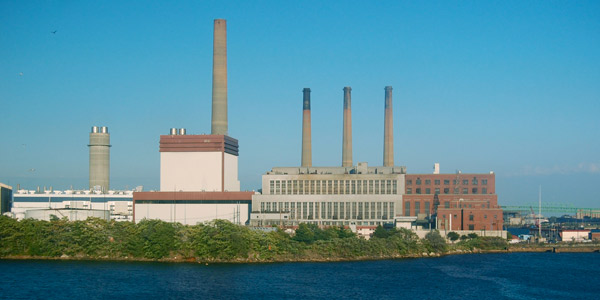By Michael Kuser
ISO-NE is moving to keep the 1,998-MW Mystic Generating Station running to ensure grid reliability following Exelon’s March 29 filing with the RTO to retire the plant in 2022.
Chief Operating Officer Vamsi Chadalavada on Tuesday sent a memo to the New England Power Pool Participants Committee outlining the grid operator’s “limited” options ahead of a planned discussion of the issue at the committee’s April 6 meeting.
Exelon last week said it “may reconsider” the decision to retire Mystic if the grid operator can reform its markets to properly value the plant’s contributions to reliability and regional fuel security. (See Mystic Closure Notice Leaves Room for Reversal.) The Everett, Mass., facility includes a 576-MW dual-fuel unit (Unit 7); two gas-fired units capable of producing a combined 1,414 MW (Units 8 and 9); and Mystic Jet, an 8.6-MW oil-fired peaker.
On the same day it issued the retirement notice, the company also announced it will purchase the Everett Marine (Distrigas) Terminal — an LNG import facility — from ENGIE North America “to ensure the continued reliable supply of fuel to Mystic Units 8 and 9 while they remain operating.”
“Since the ISO received Exelon’s retirement bids, it has been analyzing the potential impacts of losing the Mystic and Distrigas facilities from a fuel security perspective,” Chadalavada said in the memo.
He highlighted the reliability impacts identified in the RTO’s recent Operational Fuel Security Analysis and the limited time to address the issue. (See Report: Fuel Security Key Risk for New England Grid.)
The RTO will ask FERC to waive its Tariff requirements to allow it to retain Mystic 8 and 9 to maintain fuel security on the system, he said.
ISO-NE CEO Gordon van Welie said in February that that the RTO might need to seek such authority for resources required for regional fuel security. (See Van Welie: ISO-NE in ‘Race’ to Replace Retirements.)
In addition to discussion at the April 6 NEPOOL Participants Committee meeting, ISO-NE will meet with its stakeholders to explain its reliability analysis of the retirement bids immediately following the RTO’s April 10 Markets Committee meeting, Chadalavada said.
“We plan to commence discussions with stakeholders, beginning at the April 25 Reliability Committee meeting, on the necessary reliability criteria for retaining resources needed for fuel security in the Forward Capacity Market,” he said.
Citing reliability issues focused on transmission security, the RTO rejected the dynamic delist bids for Mystic Units 7 and 8 in Forward Capacity Auction 12, which covers 2021/22.
Oil supplies at plants in New England declined rapidly during a cold snap earlier this winter as gas prices spiked and dual-fuel plants switched to oil, but the RTO avoided serious reliability issues thanks to LNG shipments.
The Distrigas Terminal — which the RTO said is the only fuel supply source available to Mystic units 8 and 9 — is the oldest such LNG facility in the U.S. and has connections with two interstate pipeline systems, the Tennessee and Algonquin pipelines, as well as with the local distribution system owned by National Grid.




